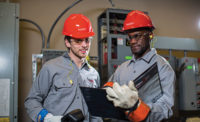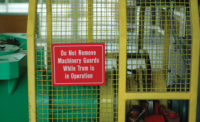Many operators rely on reactive measures to mitigate the risk of fires and explosions in their facilities, but firming up thermal hazard risk mitigation protocols demands a holistic approach. Nelson Duran, Director of Engineering at ABS Group, joined me to discuss what it means to build a comprehensive plan for preventing fires, explosions, and other thermal hazards:
What does it mean to take a holistic approach to thermal hazard risk mitigation?
Generally speaking, the attitude toward thermal hazard risk is reactive. It assumes that a fire will happen but, if the response is fast enough, responders will be able to control the damage. A holistic program acknowledges that fires happen often but doesn’t treat them as an inevitability. Instead, it encourages operators to balance proactive, ongoing, and reactive measures to reduce the likelihood of a fire starting and the consequences when one does.
Talk us through the differences between the three levels of protection.
Things like sprinkler systems, traditional smoke alarms, and extinguishers are all reactive measures. They’re critical to fire safety, but they aren’t very helpful before the fire starts. They’re seen as a relatively cost-effective approach because they’re a one-time investment and used sparingly. The trade-off is, of course, that if they fail to contain the blaze, operators will be facing much higher losses.
Then, there are ongoing measures — things like heat detectors, gas monitors, pressure gauges, and thermal imaging that comprise fire and gas detection systems (FGS). These solutions require a bit more investment but give operators a critical advantage: time. While they don’t necessarily help contain a blaze once it ignites, they can give operators a heads-up that the conditions for ignition might be higher than average. That allows sprinklers and other systems to begin working to counter the environmental elements that contribute to incidents ahead of time and response teams to jump into action more quickly.
Finally, truly proactive measures are the ones that can help reduce the risk of fires starting, like remodeling, rebuilding, replacing equipment or fixtures, and other architectural changes. Operators can use more advanced modeling methods to help identify elements in a facility’s design or processes that could contribute to ignition, spread, or harm to occupants and address them through larger-scale investments. It’s a more expensive but highly valuable approach as it allows operators to develop more effective plans.
Why do so many facilities rely so wholly on the reactive approach?
Fires happen all the time, and most often they’re minor. Because of this, people have gotten comfortable with the idea that they will just be able to put the fire out and move on. Often, that’s true—sometimes it’s not.
Then, there’s the fact that most regulations also focus on reactive measures because the agencies that design them, like OSHA, are interested in controlling damage, not eliminating all risk that might be present in a business. It’s a result of the perception that compliance is the same as safety.
And that’s not to say those regulations aren’t good — they’re very good at what they are intended to do. That’s the key though; most regulatory guidance is intended to be a baseline to apply to the broadest range of facilities. Regulators aren’t interested in mitigating a business’ risk, they’re interested in preserving health and safety when an incident occurs.
When building an FGS for ongoing efforts, what should operators look for?
There are three elements to consider when evaluating an FGS:
- Detection rate. This is how good the monitoring system is at actually detecting flammable or hazardous gasses in the environment ahead of time. The most robust response system in the world would be useless if it failed to detect the hazard preemptively, so it’s critical that detector coverage is a high priority for operators investing in an FGS.
- Integrity. This is essentially an assessment of the probability that the system will perform as designed given its component parts. It’s important because it ensures that the appropriate redundancies and workarounds are in place to accommodate compromises to the system that might arise during a hazard event or due to equipment failure.
- Effectiveness. This is an evaluation of how the system performs to ensure that it works in practice in addition to in theory. Operators and system designers can engage in computational fluid dynamics and other modeling processes to test efficacy so they’re confident the FGS works when the time comes.
Going back to the holistic approach, what sets companies that are engaging with fire risk planning on this holistic level apart from those that are not?
It really boils down to three things:
- Motivation: Companies that take thermal hazard safety—or any hazard mitigation process, for that matter—seriously are motivated not by regulatory compliance but by concern for the safety of people, both workers and surrounding communities.
- Specificity: The policies and practices at these organizations are tailored to the industry, the facility, and regional conditions that might contribute to consequences in addition to adhering to compliance checklists.
- Balance: These organizations recognize that, where fire safety is concerned, there are no guarantees. Proactive measures don’t stop all fires from starting, ongoing measures can’t always give you a head start, and reactive measures won’t always contain the situation. You need to balance all three to move the needle on thermal hazard risk.
Thanks so much for speaking with us. Where can readers keep up with your work?
They can follow me on LinkedIn.




